Traducción generada automáticamente
Mostrar original
Mostrar traducción
This museum quality old master oil on canvas formal portrait painting depicting the family of the Count Zanardi is signed by the artist- the female painter Lucia Casalini Torelli- and published in a book dedicated to Casalini Torelli’s workshop and academy.
This palatial masterpiece artwork comes directly from the ancient Villa Maraini Guerrieri - Palidano di Gonzaga (Mantua), an historic Italian heritage building owned by the descendants of the family portrayed for more than two centuries, until 1998.
The big scale of this oil on canvas masterpiece painting states the relevance of Lucia Casalini Torelli as a painter. The present artwork is a formal family portrait painting that aim to introduce the characters depicted according to their social role in the society. The noble family is all gathered under a loggia overlooking a park, the landscape in the background is partially covered by a beautiful red cloth on the right side.
The father stands up and holds the hand of his eldest son, proudly introducing his future heir. The son wears a light-blue dress and red boots, he is depicted in a serious pose holding a black tricorn hat under his arm and a rapier sword on his belt.
The mother wears an elegant gold and dark green brocade dress, she is sitting with her youngest daughter on her knees while her second son is by her side. The little daughter wears a lovely long red and dress with white lace and holds an apple on her hand. The son stands next to his mother and is dressed in a brown priestly clothes.
This palatial old masters piece was probably painted in 1740 due to the similarities with Cardinal Doria’ s portrait, now on display at the Doria Palace Museum, the official residence of the Prince of Genoa.
The painting features original canvas (“prima tela”) and antique original patina, it is in excellent overall condition considering the age, use and its large scale. The whole surface is stable and uniform, bright and saturated colors. No signs of invasive restoration.
As well as for its exceptional quality and quite perfect state of conservation, this painting is particularly important and even more valuable both for the artist who painted it and for its absolutely exclusive provenance.
Lucia painted the most prominent and powerful noble families of her time, the location of these paintings is unknown to the art market as it is extremely likely that the portraits are still kept in private collections.
Furthermore, Lucia was one of the most appreciated artists of her time, so important that she was admitted as a member of the academy at a time when women were forbidden to attend these studies.
In 1706, Felice Torelli-Lucia's husband- was one of the founders of the Accademia Clementina; Lucia was elected an honorary member in 1726, a few years after Rosalba Carriera became a member of the Academy. The active participation of Lucia and Felice in the Academy contributed to their artistic and social success in Bologna. Her self portrait is at the Uffizi Gallery in Florence.
As regards the provenance, this old master painting come directly from Villa Maraini Guerrieri - Palidano di Gonzaga (Mantova) owned by Zanardi family - whose descendants are still alive- on the occasion of the important auction of the entire furnishings and fine art objects of the villa.
Also, from the date of its execution (around 1740) until its sale in 1998, the painting has always been kept in the private villa of the Zanardi counts, this certainly contributed to its excellent state of conservation.
The villa is a historic building built in 1746 and was owned by the family until 1998.
The charming and distinctive feature of the Villa is represented by the fact that, from its construction up to 1998, belonged to the same noble family lineage and, therefore, it was kept, together with the decorations, furniture and paintings in it contained, with extreme confidentiality, without ever being disclosed or exhibited to the public.
Measures: Height 240, Width 217 cm. Signed low left “Casalini Torelli Fece”
Literature: Prof. I. Graziani, ‘La bottega dei Torelli’, Editrice Compositori, 2005, pp. 105, 205.
Irene Graziani is a prominent scholar and professor at the University of Bologna who dedicates her research activity to Emilian painting of the 18th century, recently she has also published a monograph on Stefano Torelli, son of Lucia, who became the official painter at the court of Catherine of Russia.
Biography:
Lucia Casalini Torelli (Bologna 1677-1762) started her career when she was 13 years old, she was the pupil of Giovan Gioseffo dal Sole, a famous baroque painter. She married the painter Felice Torelli and two of their seven children, Stefano and Anna, become painters. Lucia and Felice married in 1701, and soon opened their own studio with students. The works of art of their "bottega" were soon very appreciated. Casalini Torelli's works were mostly of sacred subjects, but she also specialized as a portrait painter, creating portraits of the prominent Bolognese and Northern Italian families of the era. Lucia Casalini Torelli was one of the principal female italian painters of the 18th century. Felice Torelli was one of the founders of the Accademia Clementina; Lucia was elected an honorary member in 1726. The active participation of Lucia and Felice in the Academy contributed to their artistic and social success in Bolognese during the first half of the 18th century. One of her self-portrait is exposed in the Corridoio Vasariano at the Uffizi Museum, Florence.
Stefano Torelli, Lucia’s son, become court’s painter of the Russian Emperor and depicted the famous “portrait of Catherine II in coronation dress”. The interest in the contemporary Italian paintings approached to the Russian court thanks to Empress Catherine. The empress, celebrated as great patron of the arts and literature, was amazed by the sophisticated and meticulous works of Casalini Torelli. The Historical and sacred theme, combined with the French portraiture technique of the Grand Sieclè, guaranteed to the Torelli family a privileged place in the Empress collection.
It’ s not a coincidence if nowadays in the Hermitage, originally the gallery where Catherine showed to her closer guest her private collection, are on display some works of this Bolognese family of painters.
Este retrato formal al óleo sobre lienzo de calidad de museo que representa a la familia del conde Zanardi está firmado por la artista -la pintora Lucia Casalini Torelli- y publicado en un libro dedicado al taller y la academia de Casalini Torelli.
Esta obra maestra palaciega procede directamente de la antigua Villa Maraini Guerrieri - Palidano di Gonzaga (Mantua), un edificio del patrimonio histórico italiano propiedad de los descendientes de la familia retratada durante más de dos siglos, hasta 1998.
La gran escala de esta obra maestra al óleo sobre lienzo pone de manifiesto la relevancia de Lucia Casalini Torelli como pintora. La presente obra es un retrato de familia formal que pretende presentar a los personajes representados según su papel social en la sociedad. La familia noble está reunida bajo una logia con vistas a un parque, el paisaje del fondo está parcialmente cubierto por una hermosa tela roja en el lado derecho.
El padre se levanta y coge de la mano a su hijo mayor, presentando con orgullo a su futuro heredero. El hijo lleva un vestido azul claro y botas rojas, está representado en una pose seria sosteniendo un sombrero tricornio negro bajo el brazo y una espada de estoque en el cinto.
La madre lleva un elegante vestido de brocado dorado y verde oscuro, está sentada con su hija menor sobre las rodillas, mientras que su segundo hijo está a su lado. La hija pequeña lleva un precioso vestido largo rojo con encaje blanco y una manzana en la mano. El hijo está de pie junto a su madre y viste ropas sacerdotales marrones.
Esta obra de antiguos maestros palaciegos fue pintada probablemente en 1740, debido a las similitudes con el retrato del cardenal Doria, actualmente expuesto en el Museo del Palacio Doria, residencia oficial del príncipe de Génova.
El cuadro presenta lienzo original ("prima tela") y pátina original antigua, está en excelente estado general teniendo en cuenta la edad, el uso y su gran escala. Toda la superficie es estable y uniforme, de colores brillantes y saturados. No presenta signos de restauración invasiva.
Además de por su excepcional calidad y su estado de conservación bastante perfecto, este cuadro es especialmente importante y aún más valioso tanto por la artista que lo pintó como por su procedencia absolutamente exclusiva.
Lucia pintó a las familias nobles más prominentes y poderosas de su época, la ubicación de estos cuadros es desconocida para el mercado del arte, ya que es muy probable que los retratos se conserven aún en colecciones privadas.
Además, Lucia fue una de las artistas más apreciadas de su época, tan importante que fue admitida como miembro de la academia en una época en la que las mujeres tenían prohibido asistir a estos estudios.
En 1706, Felice Torelli -marido de Lucia- fue uno de los fundadores de la Accademia Clementina; Lucia fue elegida miembro honorario en 1726, pocos años después de que Rosalba Carriera se convirtiera en miembro de la Academia. La participación activa de Lucia y Felice en la Academia contribuyó a su éxito artístico y social en Bolonia. Su autorretrato se encuentra en la Galería de los Uffizi de Florencia.
En cuanto a la procedencia, este cuadro antiguo procede directamente de Villa Maraini Guerrieri - Palidano di Gonzaga (Mantua) propiedad de la familia Zanardi -cuyos descendientes aún viven- con motivo de la importante subasta de todo el mobiliario y objetos de arte de la villa.
Además, desde la fecha de su ejecución (hacia 1740) hasta su venta en 1998, el cuadro se ha conservado siempre en la villa privada de los condes Zanardi, lo que sin duda ha contribuido a su excelente estado de conservación.
La villa es un edificio histórico construido en 1746 y fue propiedad de la familia hasta 1998.
La característica encantadora y distintiva de la Villa está representada por el hecho de que, desde su construcción hasta 1998, perteneció al mismo noble linaje familiar y, por lo tanto, fue conservada, junto con las decoraciones, muebles y pinturas que contenía, con extrema confidencialidad, sin ser nunca divulgada ni expuesta al público.
Medidas: Alto 240, Ancho 217 cm. Firmado abajo a la izquierda "Casalini Torelli Fece"
Literatura: Prof. I. Graziani, "La bottega dei Torelli", Editrice Compositori, 2005, pp. 105, 205.
Irene Graziani es una destacada estudiosa y profesora de la Universidad de Bolonia que dedica su actividad investigadora a la pintura emiliana del siglo XVIII; recientemente ha publicado también una monografía sobre Stefano Torelli, hijo de Lucia, que llegó a ser pintor oficial de la corte de Catalina de Rusia.
Biografía:
Lucia Casalini Torelli (Bolonia 1677-1762) comenzó su carrera a los 13 años, fue alumna de Giovan Gioseffo dal Sole, famoso pintor barroco. Se casó con el pintor Felice Torelli y dos de sus siete hijos, Stefano y Anna, se convirtieron en pintores. Lucia y Felice se casan en 1701 y pronto abren su propio estudio con alumnos. Las obras de arte de su "bottega" pronto fueron muy apreciadas. Las obras de Casalini Torelli eran en su mayoría de temática sacra, pero también se especializó como retratista, creando retratos de las prominentes familias boloñesas y del norte de Italia de la época. Lucia Casalini Torelli fue una de las principales pintoras italianas del siglo XVIII. Felice Torelli fue uno de los fundadores de la Accademia Clementina; Lucia fue elegida miembro honorario en 1726. La participación activa de Lucia y Felice en la Academia contribuyó a su éxito artístico y social en Bolonia durante la primera mitad del siglo XVIII. Uno de sus autorretratos está expuesto en el Corridoio Vasariano del Museo Uffizi de Florencia.
Stefano Torelli, hijo de Lucia, se convirtió en pintor de la corte del emperador ruso y realizó el famoso "retrato de Catalina II vestida de coronación". El interés por la pintura italiana contemporánea se acercó a la corte rusa gracias a la emperatriz Catalina. La emperatriz, célebre como gran mecenas de las artes y la literatura, quedó maravillada por las sofisticadas y meticulosas obras de Casalini Torelli. La temática histórica y sagrada, combinada con la técnica del retrato francés del Grand Sieclè, garantizó a la familia Torelli un lugar privilegiado en la colección de la emperatriz.
No es casualidad que hoy en día en el Hermitage, originalmente la galería donde Catalina mostraba a sus invitados más cercanos su colección privada, se expongan algunas obras de esta familia de pintores boloñeses.




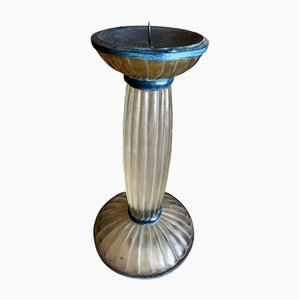
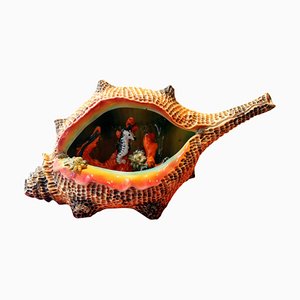

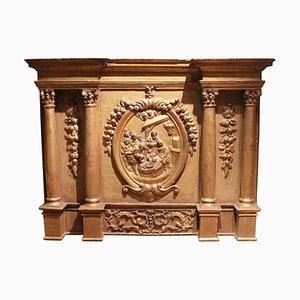

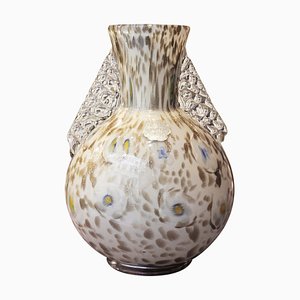

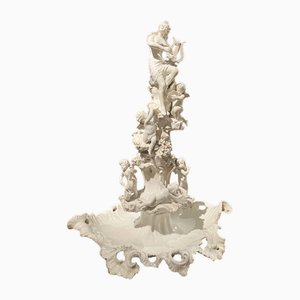


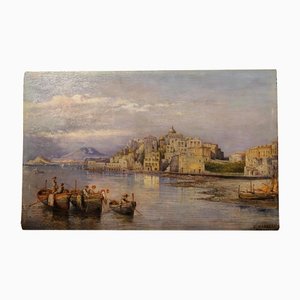


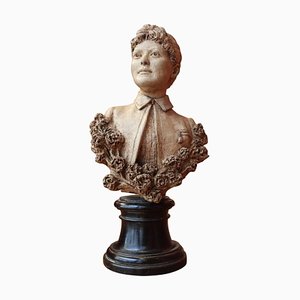


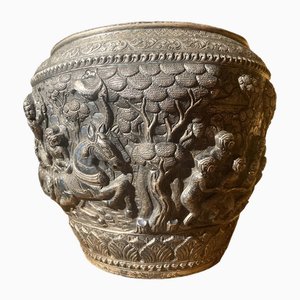

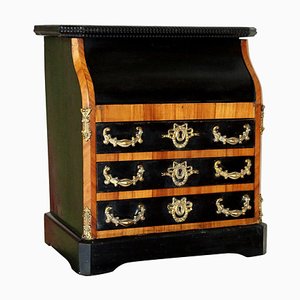

Contacta con nosotros
Haz una oferta
¡Hemos notado que eres nuevo en Pamono!
Por favor, acepta los Términos y condiciones y nuestra Política de privacidad
Contacta con nosotros
Haz una oferta
¡Ya casi está!
Para seguir la conversación en la plataforma, por favor completa el registro. Para proceder con tu oferta en la plataforma, por favor completa el registro.Exitoso
Gracias por tu consulta, alguien de nuestro equipo se pondrá en contacto contigo en breve.
Si eres profesional del diseño, por favor solicita aquí los beneficios del Programa comercial de Pamono